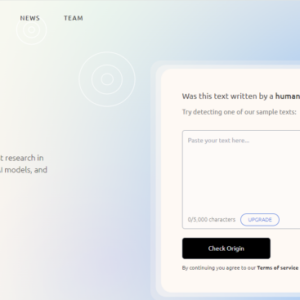In recent years, the world of literature has witnessed a revolutionary shift with the advent of artificial intelligence (AI). One such remarkable tool that has gained immense popularity among writers is ChatGPT. This AI-powered language model developed by OpenAI has opened new possibilities for authors, making the process of writing a book more efficient and accessible. However, as with any technological innovation, there are both advantages and disadvantages to utilizing AI in the creative process. In this article, we will explore the pros and cons of using ChatGPT to write a book, shedding light on the potential benefits and drawbacks that come with harnessing AI to create literary works.
- How Google’s Search Generative Experience (SGE) Will Affect SEO
- AI Marketing Automation Tips Every Marketer Should Know
- 5 Practical Ways to Use ChatGPT Prompts for Marketing
- HyperWrite AI Review: Will This AI Tool Improve Your Writing?
- Best AI Content Generator? A Few Great Options and When You Should Use Them
Artificial intelligence associated with tools like Chat GPT is making a splash in the world of literature. This form of generative AI could even start to replace real human writers when it comes to content creation and even creative writing.
You are viewing: How to Use ChatGPT to Write a Book: Pros & Cons of Using AI to Create
If you have always dreamed of writing a book but didn’t have the time, the skill, or the drive, you might be interested in how you can use ChatGPT to write a book.
Make the most of AI with some of these helpful tips while keeping in mind its overall limitations.
Prompt Engineering

First and foremost, you will need to do a little creative work to feed OpenAIs ChatGPT the basic information that it needs to seed your story.
While there is a lot that AI technology can do, it’s not yet capable of creating brand-new stories from scratch.
This means that you will need to have some of your own ideas in mind of what you want your book to be about.
The more specific information you can give to the AI tool, the better your outcome will be.
Most commonly, this is known as prompt engineering when using Chat GPT to write your book. If you are creating a fictional novel, then you may not have to worry as much about accuracy.
You can let the tool do the majority of the heavy lifting, coming up with its own creative ideas for stories, plot, and intriguing characters, helping you overcome writer’s block. Give it a series of commands like:
- Provide a story arc for a fictional story with the main character of a princess captured in battle and must fight her way to freedom.
- Write a character sketch for the princess and her captor, including physical description and personality.
- Describe the world that the princess lives in, including what other types of creatures there are, the rulers of the world, and its name.
With some of these basic pieces in place, you will have a much easier time putting ChatGPT’s writing skills to the test.
Letting the Software Come Up with Chapter Summaries

Once you have the basics of your story down, you need to consider how the entire book will shape up by coming up with a book outline. Many fiction writers swear by outlining their stories before they start writing, and Chat GPT makes it easy to do just that.
You can prompt the AI system to come up with your chapter summaries. Here is a quick and easy way to do that:
- Give me a list of chapters for my fantasy story.
- Write a detailed outline of chapter one, including information about the battle and how the princess gets captured.
- Move on to asking for outlines for all chapters.
All you have to do is sub out the information that matters most for your story. In no time at all, you will have the bare bones of a book that could rival what you would get from human authors with much less time invested.
Drafting a Story Arc
Unfortunately, one of the downsides of Open AI and its ChatGPT software is that it doesn’t necessarily know how to write a book.
One of the basic principles of a story is that it comes with an arc, a change that occurs as the story progresses both externally and internally for the protagonist.
See more : 10 Best Free & Paid ChatGPT Plagiarism Checker Tools On The Market
The process of character development and plot development is a key part of any story, as it allows the reader to connect with the protagonist on an emotional level and to understand why certain things happen in the story.
As the writer, you may have to feed the software more information to craft a compelling storyline. This is one step that you won’t want to skip when learning how to use ChatGPT to write a book.
To this end, you will need to consider supplying the story arc that you wish to see. You can incorporate this in your initial prompt engineering by telling ChatGPT to generate ideas based on what you want the characters to gain throughout the course of the story.
Using the Tool for Research for Your Book

Another thing you can do to help aid your novel writing process is to utilize ChatGPT for research purposes. Instead of spending hours falling down the rabbit hole on Google, you can get your answers quickly – and mostly accurately – from ChatGPT (which you can even use to expand into a full online business).
If you’re writing a historical fiction novel, you can get as much detail as you need to write about it in mere minutes.
Keep in mind that if the details of your story truly matter, you might want to double check the facts that you get from ChatGPT. It’s a great tool that has a lot of potential, but it’s still just that – a tool. It gets things wrong from time to time.
That being said, it isn’t likely that your fictional story has much at stake if you get a few details incorrect, so it may be just fine for your purposes.
ChatGPT Limitations When Writing a Book
Of course, not everything is perfect when you use ChatGPT to do the heavy creative lifting required to write a book. Here are a few limitations you might want to be aware of:
Must Provide Some Direction
AI-generated content might be relatively intelligent, but it isn’t inherently creative. To this end, you will need to provide detailed prompts that give it some direction.
Using the right prompts, you can ask it to write in the voice of your favorite author, such as Stephen King. You can give it an extremely detailed plot overview, complete with the story arc.
With some of these details in place, you have a much better chance of getting the finished product that you’re looking for.
Layering Emotional Impact

On a related note, you may also find that there is limited emotion when you use ChatGPT to write a book.
It can create plots that will draw readers in, but it lacks the capacity to account for emotional resonance that makes your story truly memorable.
You may choose to use ChatGPT to write a book quickly or to draft a nonfiction piece.
However, you may still need to go through and make some tweaks if you want your readers to be compelled to finish your story, remember it, and recommend it to their friends and family.
Need to Verify Facts
As mentioned earlier, Open AI does not recommend using its software when facts are of the utmost importance. It has a great degree of understanding and knowledge, but it may not always get things 100 percent accurate. For example, it only scores a 70 percent on the medical licensing exam.
See more : ChatGPT for Brainstorming: 5 Powerful Ways to Harness AI For New Ideas
Always double-check if accuracy matters.
Examples of Authors Using ChatGPT

There has been an influx of authors learning how to use ChatGPT to write a book (check out our article to find out is writing a book profitable?), flooding the Kindle Direct Publishing platform with new titles.
Author Brett Schickler used the tool to write a children’s book on the benefits of saving and investing. In a matter of hours, he had an entire 30-page book that he could upload to the KDP platform.
To date, Brett Schickler has earned hundreds of dollars from this one title.
Another author was able to create a 93-page book with illustrations in just 10 days using a combination of ChatGPT and Midjourney.
It’s clear that there is a lot of potential for someone to trim down their writing process and potentially put out hundreds of books a year on self-publishing platforms with the help of Open AI.
See our related article for more ChatGPT success stories.
Jasper AI vs. ChatGPT

Of course, ChatGPT isn’t the only program on the market that can help you to write a compelling book. Jasper AI has been around for a while and shows some incredible promise on this end of things as well.
Both Jasper AI and ChatGPT use the software from Open AI to create content that is prompted by you, the user.
Using Jasper allows you to seamlessly create long-format content, acknowledging up to 3,000 characters above where the cursor has been left off.
Much like ChatGPT, you will need to give Jasper a lot of direction to write your story for you. It’s often best if you can write a detailed introduction or plot overview to show it where you want it to go, how you want the content written, and include any keywords that matter to your story.
One benefit to using Jasper AI over ChatGPT is that it also allows you to use the Jasper Art feature to create AI-generated images for children’s books or illustrated novels (but also be sure to check out our Novel AI review).
If you’re thinking of writing a book with ChatGPT, you should also try Jasper to get a feel for both programs before deciding which one is right for you.
For related reading on Jasper AI, see our other articles here:
- Jasper AI Review
- 13 Jasper AI Alternatives
Final Thoughts: How to Use ChatGPT to Write a Book
As you can see, there are some definite benefits to using ChatGPT and its AI system to create a new story that you can publish quickly and efficiently. It’s important to remember that ChatGPT is just a tool, and its AI system shouldn’t replace your unique writing style.
Other tools like Jasper may be just as powerful for this endeavor, though. Consider which of these AI tools might be the right fit to help you come up with new ideas, flesh out your next novel, or conquer writer’s block (our list of AI novel writing software will help).
That concludes the article: How to Use ChatGPT to Write a Book: Pros & Cons of Using AI to Create
I hope this article has provided you with valuable knowledge. If you find it useful, feel free to leave a comment and recommend our website!
Click here to read other interesting articles: AI
Source: newslength.com
#ChatGPT #Write #Book #Pros #Cons #Create
Source: https://newslength.com
Category: AI





